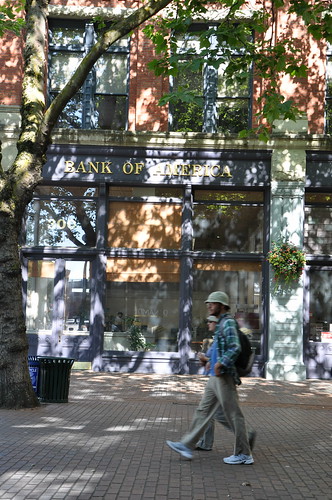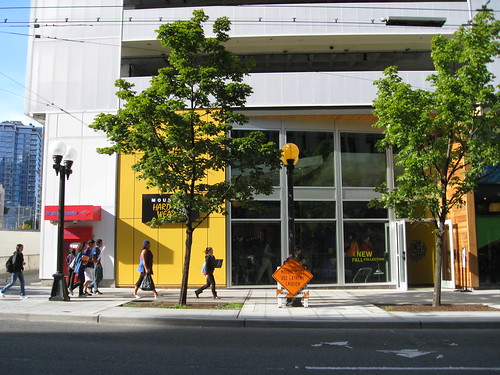by Kate Howe, Urban Planner for VIA ArchitectureMuch of our combined city planning energy has been focused on traffic; how to plan for it, how to make space for it, and how to keep people from getting in its way. However, the methodologies championed by Danish urban expert Jan Gehl and his team at
Gehl Architects are finally giving neighborhoods and community advocates the facts they need to compete in a world dominated by traffic demand models, population forecasting, and abstract regulations that do not value public realm.
In this way, a paradigm shift is taking place around the world, bringing with it a new fact-based level of empiricism to our sometimes too subjective conversations about sustainable urbanism. Gehl promotes a data driven view for improvement-based on watching and quantifying what people do in public space, how often they do it, and where. It seems simple, because it is.
We too can become experts at understanding how life, mobility, and people can be invited back to the city.The tricky part is collecting and paying attention to this data.
As of today, Copenhagen is the ONLY city in the world with a Department of Public Life. This is not a Traffic Department, or a Building Department, but a city agency that is consistently engaged with the everyday users of a city, its pedestrians, its residents and its commuters.
Over time, a close relationship between the progressive City Engineer and City Architect in Copenhagen and Jan Gehl’s lab at the Royal Danish Academy of Fine Arts helped to validate the small changes happening on the ground – taking back a parking space here, improving a pedestrian street there. Now we can quantify how many more people are living and using Copenhagen’s streets and how it is that they are using them. Perhaps most exciting for me, during the forty years of incremental change for the better, a priority on having a rich public life survived through many administrations, was depoliticized, and ultimately began to feel more like a basic civic right.
For our struggles in Seattle, Gehl Architect’s Founding Partner, Helle Soholt presented last night a first glimpse into our own
Public Life Study (due out in full in March). It confirms what many of us who work downtown already know:
- that the office core is lifeless throughout the day
- that one has to walk to the edges, or the Pike Place market to find a nice place to sit and have lunch
- that you don’t linger unless you are waiting for a bus.
They know this because they had 43 graduate students at the University of Washington standing at street corners through out the downtown counting people. They did this in all seasons, days, nights and weekends. Observing and marking down what people are doing; i.e. are they sitting, standing, for how long?, walking, talking, shopping? The Study will also show how these activities rank up versus other cities of our size such as
Melbourne and Sydney Australia. (Hint, not so good)
While I could go on to discuss Gehl’s projects and this Study at length, you can instead
watch nearly the whole presentation here. (You can also watch the introduction to the presentation by Todd Vogel, Sally Clark and Mayor McGinn by
clicking here.)
But overall, my conclusion is simply that the time has arrived! I hope that we can learn to pay attention to the map Gehl Architects has begun to provide. As Helle noted:
- "We need to give something to the city in order to get something from the city."
- "Every person in the city is a part of the city’s culture."
- "Most importantly the function of public space is that it is democratic, open and accessible to all.”
In sum, their five recommendations for Seattle:
1. Connect between Pike Place Market, the Waterfront and Westlake Center These are the areas with the most active life now, how can we pull some of the activity from Pike Place towards the rest of our downtown? What can we do about the parking lots and junky urban design here? What are we saying at eye level invitations to the waterfront?
2. Complete the Bicycle NetworkWhile pictures of Copenhagen’s famous cycle tracks are sure to make any cyclist drool, the recent changes in New York City are a great US precedent. Give us a safe – separated cycle track downtown so that even grannies feel like taking their bikes out. Please, and thank you.
3. Prioritize a First Avenue Pilot ProjectGehl Architect’s study shows First Avenue as the primary connector between languishing Pioneer Square and the Pike Place Market, by far our most vital walking environment downtown. They suggest we treat it that way. While retail owners may be nervous about losing traffic volumes and parking spaces, more hard data continues to show (such as in the recent PLANYC) increased walking traffic can be correlated with more retail sales. And we have a LOT of room for growth on First Avenue if we designed it for better connections and walkability.
4. Green our AlleysOur streets are broad in Seattle, with one way fast moving traffic. Like Melbourne we have an opportunity to green our narrower and intimate alleys, remove the dumpsters and make new smaller scaled streets and places. These can be the places to stay. They also recommend simply greening the east-west connectors with sitting benches and places, street trees to make the incredible topography less challenging.
5. Make new facades where none existHallelujah. Helle mentioned, first that we have something like 75,000 parking spaces in the downtown; we can sacrifice a few at the street level to make new storefronts and facades. What is the city doing to make this happen?
























